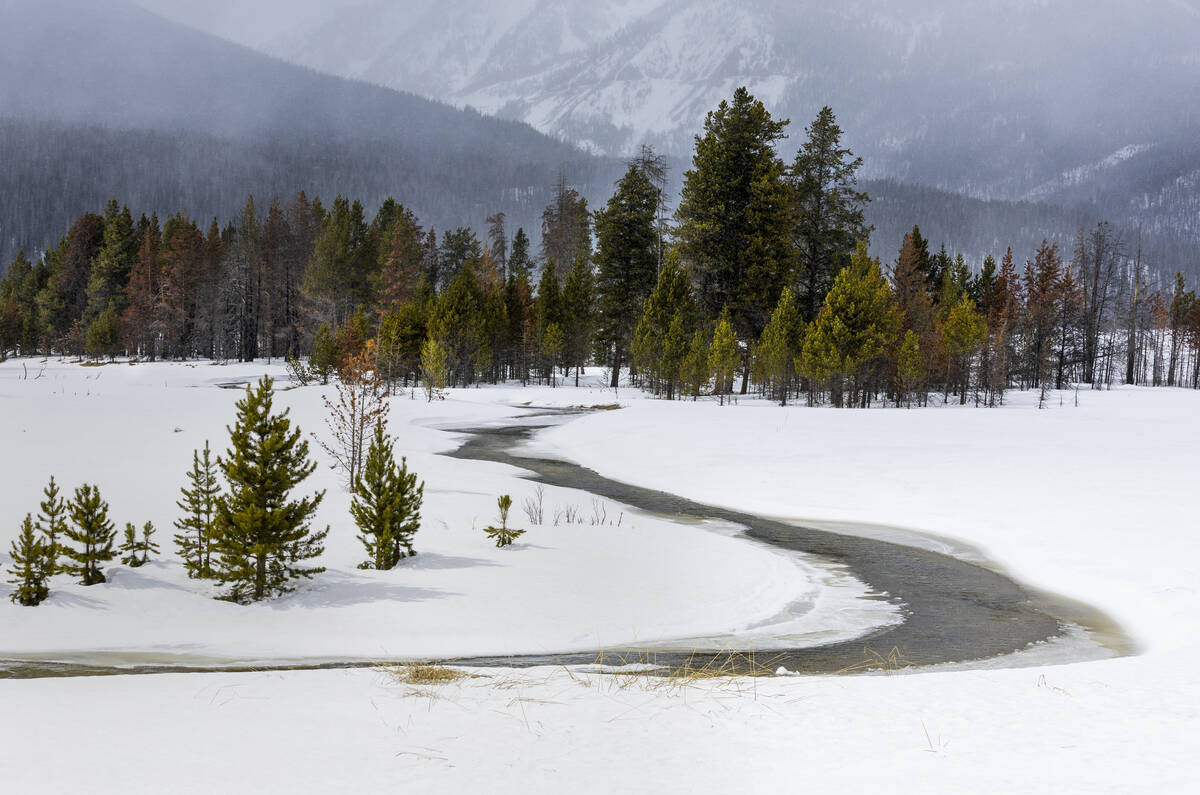Nevada agrees to take less water. Here’s what that means for you
An agreement struck last week between Nevada, Arizona and California calls for the three states to significantly reduce the amount of water they pull from the drought-stricken Colorado River over the next three years.
The plan, which still needs to be approved by federal officials, calls for the federal government to compensate cities, irrigation districts and Native American tribes in exchange for reduced water use, to the tune of 3 million acre-feet by the end of 2026.
Under the plan, the Silver State would leave as much as one-quarter of its normal share of the river in Lake Mead over the next 3½ years.
Just how would that commitment affect the water supplies for Southern Nevada, where 90 percent of the water comes from Lake Mead?
Despite the substantial allocation cuts that would be required by the agreement, Southern Nevada Water Authority General Manager John Entsminger told the Las Vegas Review-Journal that he doesn’t anticipate that the plan would have a significant impact on Southern Nevadans’ daily lives.
“It’s our community’s constant and consistent efforts in water conservation efforts over the last 20 years that make our participation in this possible,” Entsminger said. “It’s a big deal, but at the same time it’s something our community has been getting ready for for the last 20 years.”
Under the agreement, Nevada would commit to banking 75,000 acre-feet of water in Lake Mead by the end of this year and another 75,000 acre-feet in 2024; 70,000 acre-feet in 2025; and 65,000 acre-feet in 2026.
Those numbers represent a hefty chunk of the 300,000 acre-foot share of the Colorado River that Nevada has claim to under normal conditions.
That allotment was reduced this year to 275,000 acre-feet under previous drought agreements to cut water use along the river based on Lake Mead’s falling water levels. And despite a well-above-average winter that is expected to boost Lake Mead’s levels this summer, shortage conditions are expected to continue into next year, according to the most recent federal projections.
Nevada has substantially reduced the amount of water it consumes from the river in recent decades, thanks in large part to conservation programs like paying residents and businesses to remove their thirsty grass and banning grass lawns in new housing developments.
Southern Nevada also recycles the vast majority of its indoor water, which allows it to stretch its small share of the river. That reduction in water consumption has allowed the region to bank tens of thousands of acre-feet of its unused water in Lake Mead annually in recent years.
In 2022, Nevada consumed about 225,000 acre-feet of water from the Colorado River, leaving the rest of its share in Lake Mead. This year, the state is on pace to use just 212,000 acre-feet, according to data from the Bureau of Reclamation.
The new agreement would require even more savings, but Entsminger said he does not expect it to force Southern Nevada to accelerate any of its conservation plans.
The agreement also would not require the water authority to invoke the sort of powers it is currently seeking in the state Legislature to limit residential water use, according to Entsminger.
Assembly Bill 220 would allow the water authority to limit residential water use to as little as 0.5 acre-feet, or about 163,000 gallons, of water per household per year under federally declared shortages. The average home in Las Vegas uses about 130,000 gallons per year.
“The provisions of AB220 would only come into play under significantly worse conditions than we’re currently facing or are projecting to be facing over the next several years,” Entsminger said.
The three-state agreement will require the region to follow through with measures already underway, such as the continued removal of nonfunctional grass turf that is required under a state law passed in 2021 and other water efficiency programs aimed at saving water in outdoor irrigation, Entsminger said.
Bronson Mack, a spokesman for the water authority, said the hope is that those conservation efforts will get the region close to that 75,000 acre-foot goal by the end of this year.
If not, the authority has the flexibility to tap into water rights in the Virgin and Muddy Rivers if needed, Mack said.
Contact Colton Lochhead at clochhead@reviewjournal.com. Follow @ColtonLochhead on Twitter.














